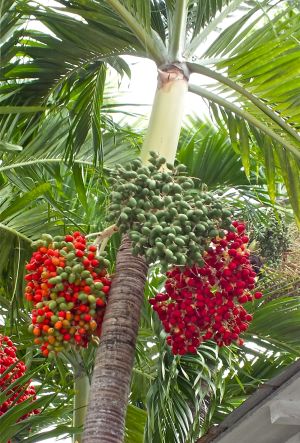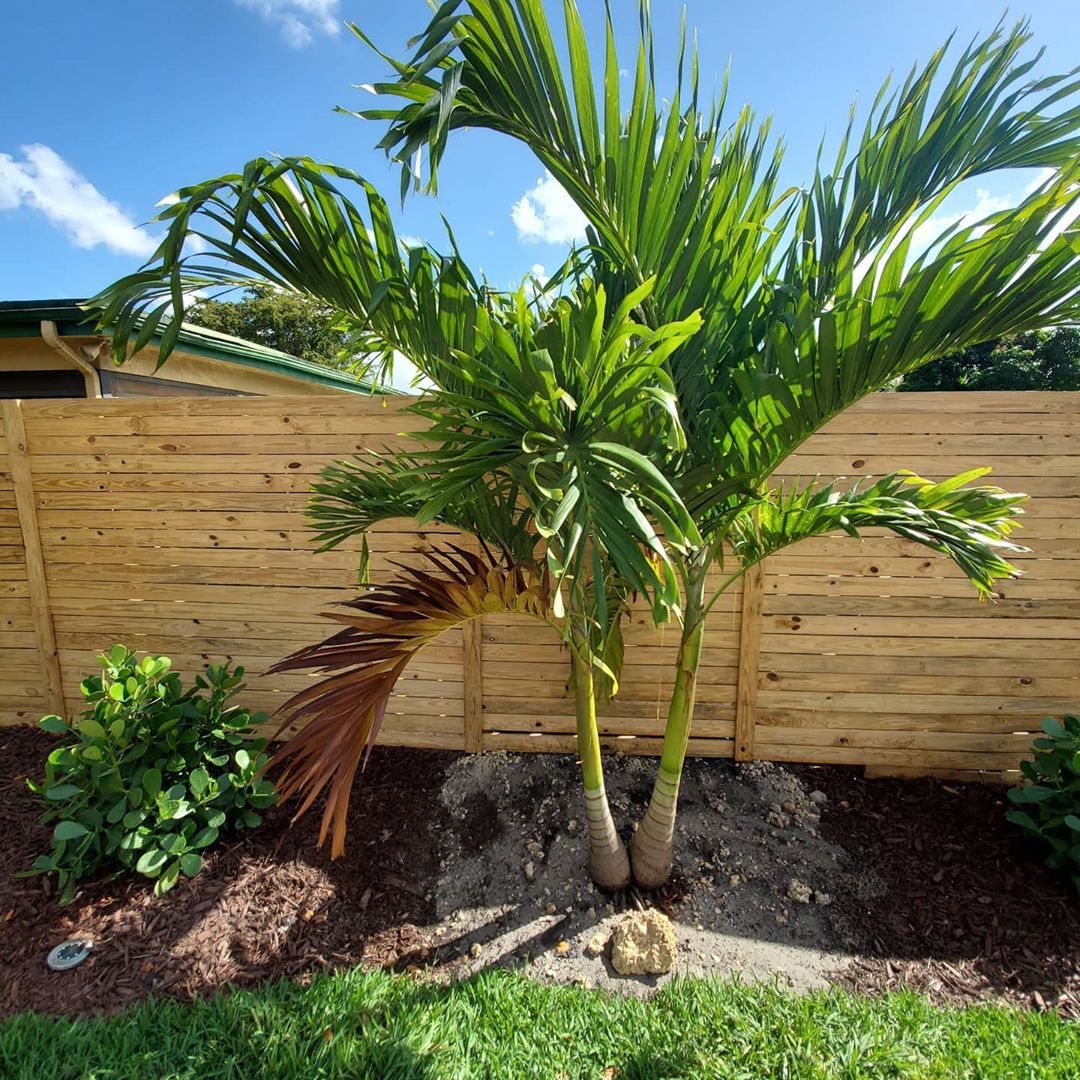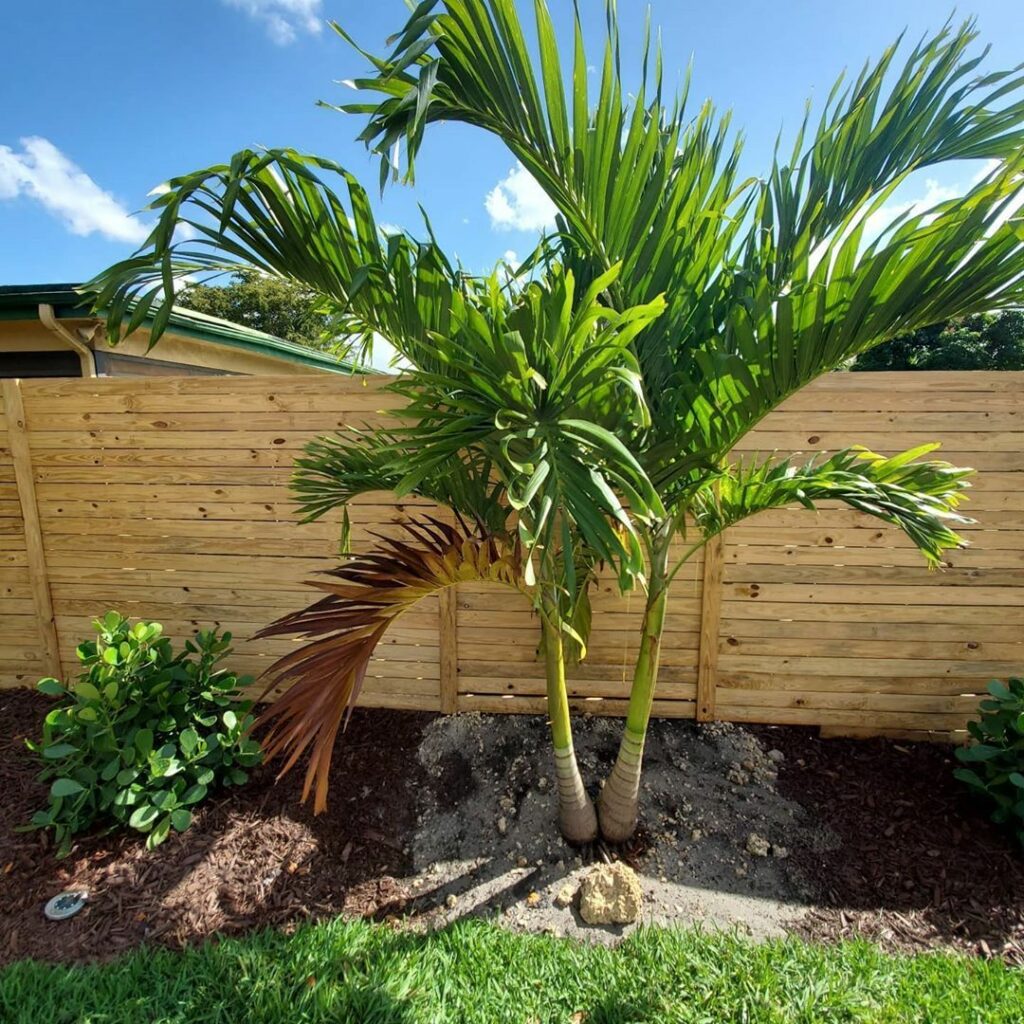Christmas Palm Tree: How to Plant and Grow The Xmas Palm
As a native of Southeastern Asia, the Christmas palm tree is a beautiful and luxurious tree that creates a cheerful vibe in every garden or living room. With striking similarities to the Royal Palm, it has all the beauty and grace of that palm tree species without the hard work to grow and maintain it that Royal Palms are notorious for.
And since it fits snuggly into small spaces and can be potted, the Christmas palm has become an icon not only of many gardens all over Florida but also a focal point of many living rooms as well. So what’s the secret behind this fascination with the Christmas palm? And how would you go about planting it and taking care of it?
Christmas Palm Tree Facts
The Christmas palm tree (Adonidia merrillii) is known by many other names. Sometimes it’s called Manila Palm, Veitchia Palm, Dwarf Royal Palm, Adonidia Palm, and Kerpis Palm. But to be fair, none of these names come close to describing the elegance and beauty of this unique tree.
- Appearance: With a gray and smooth trunk that carries the scars of fallen fronds, the Christmas palm cuts a graceful figure. At the top of that trunk perches a crown of fronds that range between 10 and 12 for healthy adult trees. The leaves are bright in color and take the shape of an arch. Each frond is about 5 feet long.
- Flowering: The leaflets themselves are robust and pointy. Their sharp end is not something to take for granted. The slender leaflets are about 2 feet long and 2 inches wide. Flowers appear during the summer and have a cool creamy color. The flowers emerge from the crown shaft and after pollinating they turn into fruits by the end of the year.
- Fruits: The fruits of the Christmas palm are usually red and look like berries. Each fruit is about one inch long and an inch and a half wide. The clusters of fruits look very much similar to the decorations on the Christmas tree, hence the name Christmas palm tree.
- Growth: The Christmas tree grows well both indoors and outdoors. Its growth rate is moderate and it reaches heights of 25 feet in the wild. However, in the garden and as a potted plant, it usually averages about 15 feet tall and 5 feet wide.
- Weather: As a native of the tropics, the Christmas palm prefers sunny and warm surroundings. It has a low tolerance for frigid cold conditions and frost can stunt its growth or even kill the tree.
Planting the Christmas Palm Tree

The tree loves lots of sunlight. So you’ll need to pick a sunny corner in your garden. A little shade won’t hurt as long as the tree will get the sun at least a few hours every day. You can either plant the tree on its own or in groups. Many people prefer a cluster of 3 Christmas palms together.
Despite the swelling base of the trunk, the tree’s root ball is relatively small for a tree of its size. This is what makes it suitable for both indoor containers and outdoor gardens as well. So even a small corner in your garden will be enough to accommodate a fully grown Christmas palm.
Even though the tree doesn’t handle the cold weather very well (anything under 30 degrees Fahrenheit is considered unhealthy and might damage the fronds), many people prefer to grow the Christmas palm in containers outdoors. When it gets cold or the frost sets in, they can move the tree inside where it’s warm.
Dry soil and drought don’t impact the Christmas palm that much. Once established, the tree needs little in the way of irrigation. The salt spray doesn’t affect it either. So if you plant it by or near the beach, its green canopy and glossy fruits will grow as healthy as always.
Image CC license by cayobo on Flickr
Xmas Palm Tree Maintenance and Care
Whether you grow your Christmas palm indoors in containers or outdoors, these hardy trees take care of themselves without much interference from you. As low-maintenance trees, they don’t make a fuss and grow happy and swaying in the breeze without a care in the world.
That said, Christmas palm trees are not entirely problem-free. For one thing, the berry-like fruits they produce every year tend to fall under the tree and make a big mess. Even outdoors, having a pile of ripe fruits on the ground is an open invitation for bugs, foraging animals, and other undesirable critters to invade your garden. Here are some other issues you might encounter while caring for the Manila Palm.
Pruning
That problem with the messy fruit is closely related to pruning. To be fair, the Christmas palm doesn’t need much pruning. When a leaf dies, it falls off the trunk leaving a little scar. This self-cleaning feature makes caring for the tree such an easy job.
To avoid the issue of having to clean the fallen fruits from under the tree, many gardeners cut off the flower stalks when they appear during the summer. This stops the fruits from growing on the tree altogether.
Fertilizer
One of the reasons many gardeners like the Christmas palm is that it grows well in fairly poor soil such as the one found in South Florida. The tree hardly suffers from malnutrition, and only in extreme cases would it require a supplement of boron. Boron deficiency is a serious problem when it occurs. It affects the shape and colors of the leaves and also impacts the fruits.
When a Christmas palm has boron deficiency it will have irregular leave sizes. Some of the leaves remain unopened and might even grow sideways. Curiously, if one of your trees gets boron deficiency, it might have to do with competition with other trees and not a problem in the soil itself. Just move the ill tree to a new area so that it can get enough nutrition.
Diseases
Another reason to love this tree is that it’s practically disease-free. Bugs and infections don’t target it and the tree lives a healthy life for the most part. However, one disease seems to afflict the Christmas palm. It’s called lethal yellowing and is caused by bacteria called phytoplasma. As the name implies, the disease leads to discoloration of the tree’s foliage and it’s also lethal.
If left without treatment, lethal yellowing causes the leaves to wilt and fall. Buds fail to grow and mature and eventually the tree itself dies. The best treatment for this disease is an injection of oxytetracycline antibiotic in the trunk of the tree.
Xmas Palm Tree Tips
From what we have covered so far, the Christmas palm is easy to plant, grow, and care for. For the most part, it’s disease-free, fuss-free, and is low-maintenance. So how do you get the most out of your tree and ensure it always stays healthy and bright? The following tips come in handy.
- Move the tree inside if the temperature goes below 40 degrees Fahrenheit. Even though it can handle temperature as low as 30 degrees, exposure to this cold weather for too long has a negative impact on the tree’s health and growth.
- Clean the tree regularly and spray its fronds with lukewarm water. The leaves attract dust which makes it fertile ground for mites and other insects.
- Cut off the flower stalks if you don’t like messy fruits dropping under the tree.
- Check the tree for spider mites and scale insects. They build webs and nests between the leaves, especially in the winter.
- It is recommended that you repot the Christmas palm every few years. As the tree’s root ball grows large, it needs a larger container to facilitate its growth.
- Use a sturdy and heavy container to handle the top-heavy tree.
- The best time to repot the Christmas palm tree is in the spring before the bloom season.
Image from @beeboyz_contractors_inc


Am I likely to be successful if I plant the Christmas Palm seeds ?